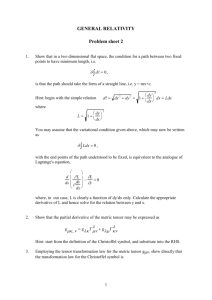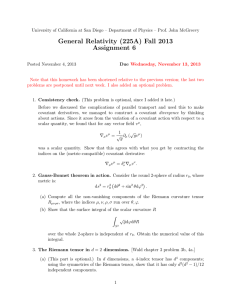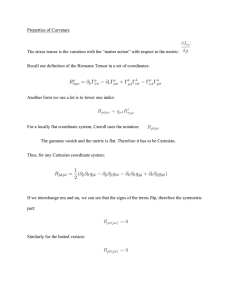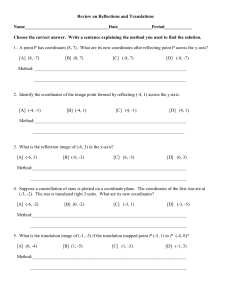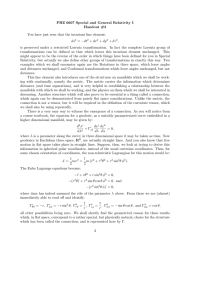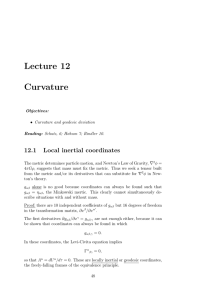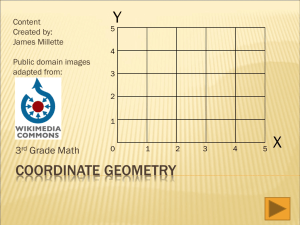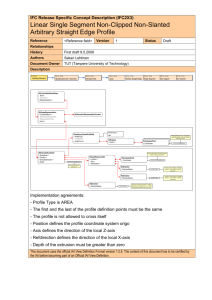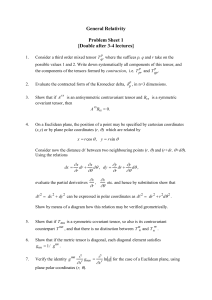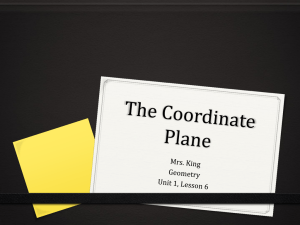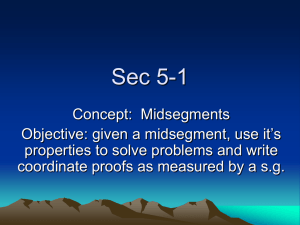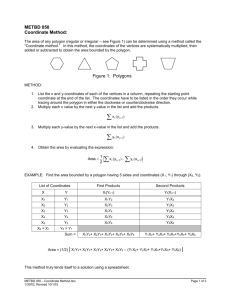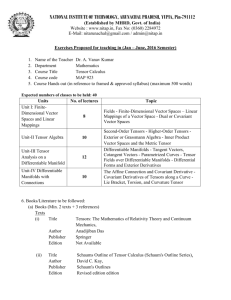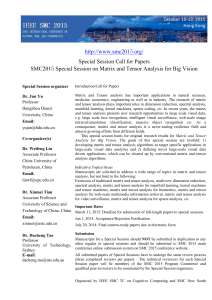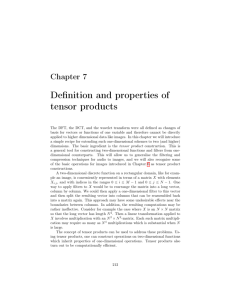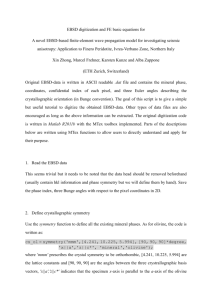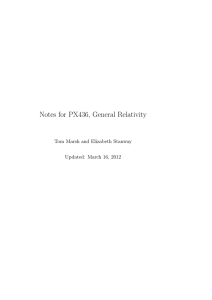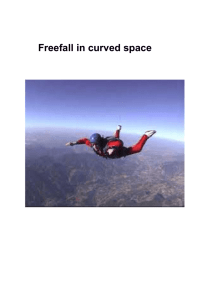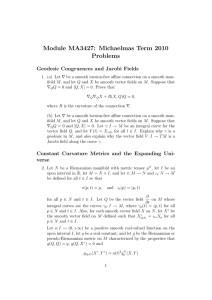Problem sheet
advertisement
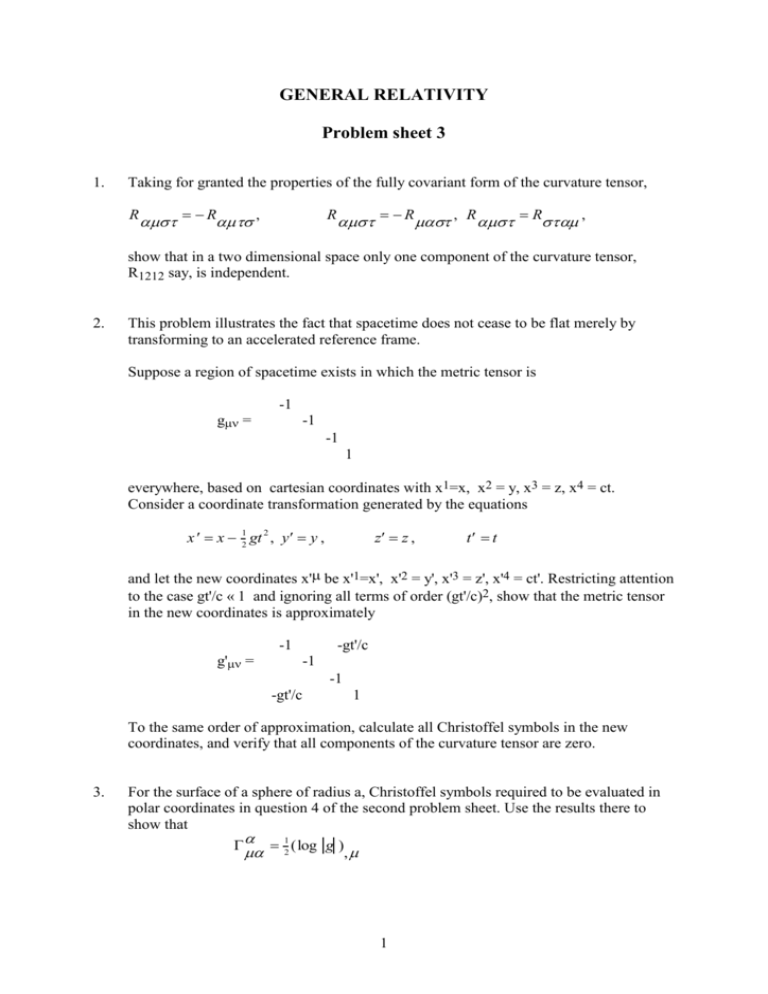
GENERAL RELATIVITY Problem sheet 3 1. Taking for granted the properties of the fully covariant form of the curvature tensor, R R , R R , R R , show that in a two dimensional space only one component of the curvature tensor, R1212 say, is independent. 2. This problem illustrates the fact that spacetime does not cease to be flat merely by transforming to an accelerated reference frame. Suppose a region of spacetime exists in which the metric tensor is -1 g = -1 -1 1 everywhere, based on cartesian coordinates with x1=x, x2 = y, x3 = z, x4 = ct. Consider a coordinate transformation generated by the equations x x 2 gt , y y , 1 z z , 2 t t and let the new coordinates x'be x'1=x', x'2 = y', x'3 = z', x'4 = ct'. Restricting attention to the case gt'/c « 1 and ignoring all terms of order (gt'/c)2, show that the metric tensor in the new coordinates is approximately -1 g' = -gt'/c -1 -1 -gt'/c 1 To the same order of approximation, calculate all Christoffel symbols in the new coordinates, and verify that all components of the curvature tensor are zero. 3. For the surface of a sphere of radius a, Christoffel symbols required to be evaluated in polar coordinates in question 4 of the second problem sheet. Use the results there to show that 12 (log g ) , 1 where g is the determinant of the matrix g. Evaluate also the components of the curvature tensor and show that the curvature scalar equals -2/a2. 4. Assuming Einstein's field equations prove that and hence deduce that 5. For the Schwarzschild metric, verify that the covariant divergence of the Einstein tensor G is zero. (Illustrate this for the case = 1 only.) 6. Consider a coordinate system x in which the first three coordinates xi (i = 1,2,3) are spatial coordinates and the fourth coordinate x4 is a time coordinate. Suppose a light signal is sent from the reference point A (coordinates xi ) to the neighbouring reference point B (coordinates xi +dxi ) and back again. For each part of the journey ds = 0, from which we can solve for the two coordinate time intervals dx 14 and dx 42 in terms of the 1 dxi. Verify that the total elapsed time at A - i.e. the value of d (g44 )1/ 2 (dx 14 dx 42 ) c - is equal to 2 d/ c where d is the distance between A and B. 7. Consider a 3-dimensional space where the distance between the neighbouring points (x, y, z) and (x+dx, y+dy, z+dz) is given by d (dx 2 dy 2 dz2 )1/ 2 2 2 2 2 1 (x y z )/ 4a A spherical surface of radius (i.e. is the distance between the origin and any point on the surface) will have an area S and volume V which may be written S( ) 4 2 (1 A 2 .....) . V () 4 3 (1 B 2 .....) . 3 respectively. Determine A and B in terms of a. Hint: choose spherical polar coordinates (r, ) defined in the usual way and find approximately the relation between r and when r / a « 1. 2 8. Show that in the Schwarzschild metric, circular orbits are possible with any radius r > 3m. Evaluate the total time for such an orbit according to (i) coordinate clocks those measuring the time coordinate t, and (ii) standard clocks at the same radius. Compare these with the corresponding Newtonian result. Evaluate the velocity of a particle describing a circular orbit, and use this result to explain the above restriction r > 3m. 3
